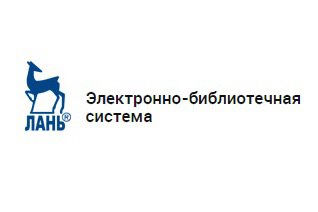| УДК 63.3(470.5) | DOI: 10.21440/0536-1028-2021-8-82-91 |
Introduction. The paper studies of the activities of Uralian ore sleuths from the 17th to 18th century. Ore prospecting in the region at this time developed independently and at the same time as geology and other mining sciences. The phenomenon of ore sleuths is therefore a fundamental premise for understanding the peculiarities of Ural mining culture development.
Research objective is to consider the emergence of the category of entrepreneurs-ore sleuths and ore producers from the peasantry, their legal status development, relations with the state-owned industry and the mining administration.
Methods of research include the concept of diffusionism, one of the components of which is the dissemination and adaptation of basic industrial technologies and, as a consequence, the development of new industrial sectors and socio-economic relations in the agrarian region.
Results. Ore sleuths, as an understudied aspect of the region’s industrial development, have been investigated. They were the first to locate ores and minerals, to discover the most famous deposits. From the second half of the 18th century they focused on the quest for gold. It has been established that since the 1730s some miners became a special legal category of persons who conducted the affairs based on a decree of a central or regional authority. “Honorary” decree on exemption from factory work, communal duties, and military service, giving a freedom of movement was the purpose of ore sleuth status acquisition and a prerequisite for keeping it. The ore sleuth status was not always used for its intended purpose. Ore sleuths often traveled to fairs and handled a business. Edicts and decrees appointing the ore sleuth’s status have been identified. It is shown that ore prospecting in the 17–18th centuries developed independently and at the same time as mining sciences.
Keywords: ore sleuths; the Babins; mining culture; mining; the Urals; 17th century; 18th century.
REFERENCES
1. Kuzin A. A. The history of ore field discovery until the middle of 19th century. Moscow: Nauka
Publishing; 1961. (In Russ.)
2. Lerner D. The passing of traditional society: modernizing the Middle East. N.Y.: L.; 1965.
3. Levy M. J. The modernization of societies: Modernization and the structure of societies: a setting
for international affairs. Princeton, N.J.: Jr. Princeton University Press; 1966.
4. Schon D. A. Beyond the stable. N. Y.: W. W. Norton & Co., Inc.; 1971.
5. Black C. E. The dynamics of modernization: a study in comparative history. N. Y.: Harper
Colophon Books; 1975.
6. Fornas J. Cultural theory and late modernity. London: Sage; 1995.
7. Kriedte P., Medick H., Schlumbohm J. Industrialization before industrialization. Cambridge:
Cambridge University Press: Paris; Editions de la Maison des Sciences de l`Homme; 1981.
8. Alekseeva E. V. (ed.) The diffusion of technologies, social institutes and cultural values in the
Urals (18th to early 20th century). Ekaterinburg: UB RAS Publishing; 2011. (In Russ.)
9. Alekseev V. V. (ed.) Civilizational identity of Russian modernizations from the 18th to 20th
century: spatial-temporal aspect. Ekaterinburg: UB RAS Publishing; 2011. (In Russ.)
10. Poberezhnikov I. V. (ed.) The Urals within a civilizational context: theoretical and methodological
conceptualization. Ekaterinburg: AsPUr Publishing; 2014. (In Russ.)
11. Alekseeva E. V. (ed.) The role of internal and external factors in the development of the Russian
civilization (18th to early 20th century). Ekaterinburg: Editorial and Publishing Office UB RAS Publishing;
2014. (In Russ.)
12. Alekseev V. V. et al. The actors of the Russian imperial modernization (18th to early 20th century):
a regional dimension. Ekaterinburg: Bank kulturnoi informatsii Publishing; 2016. (In Russ.)
13. The socio-economic history of the Urals from the 18th to early 20th century: problems and
solutions: collection of scholarly articles and materials. Ekaterinburg: Institute of History and Archeology
of UB RAS Publishing; 2021. (In Russ.)
14. Kurlaev E. A., Mankova I. L. Participation of foreign master craftsmen in developing Russia's
mining industry in the XVIIth. Otechestvennaia istoriia = National History. 2003; 5: 49–62. (In Russ.)
15. Kurlaev E. A. Ural metallurgic works from the 17th to early 18th century (organizational and
technological aspects): PhD in history abstract of diss. Ekaterinburg; 1998. (In Russ.)
16. Kurlaev E. A. Silver ore exploration in the Southern Urals. Izvestiya vysshikh uchebnykh zavedenii.
Gornyi zhurnal = News of the Higher Institutions. Mining Journal. 2020; 7: 110–119. (In Russ.) Available
from: doi: 10.21440/0536-1028-2020-7-110-119
17. Kurlaev E. A. Archaeological study of Shuvakish iron works of the early 18th century. Uralskii
istoricheskii vestnik = Ural Historical Journal. 2002. 8. P. 164–183. (In Russ.)
18. Korepanov N. S. On the history of gold discovery in the Urals. Uralskii geologicheskii zhurnal =
Uralian Geological Journal. 1998; 1: 27–32. (In Russ.)









